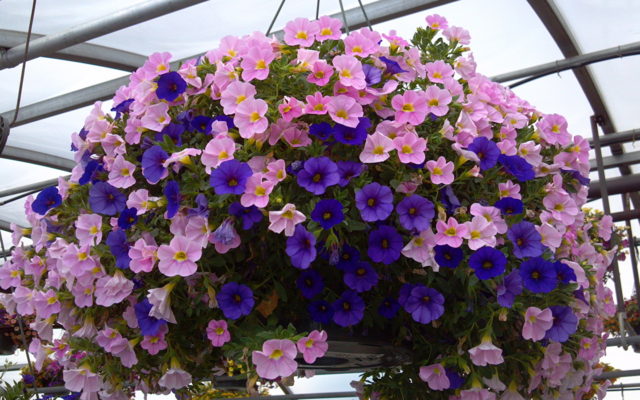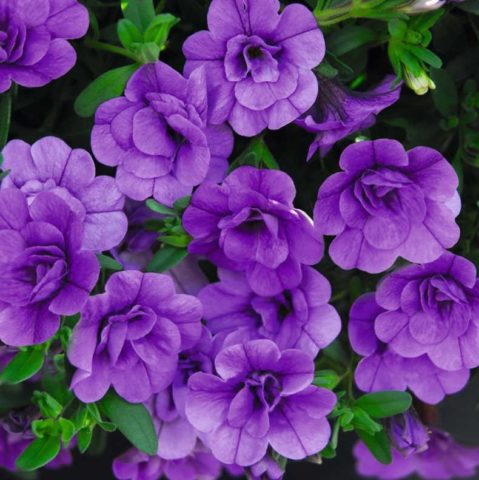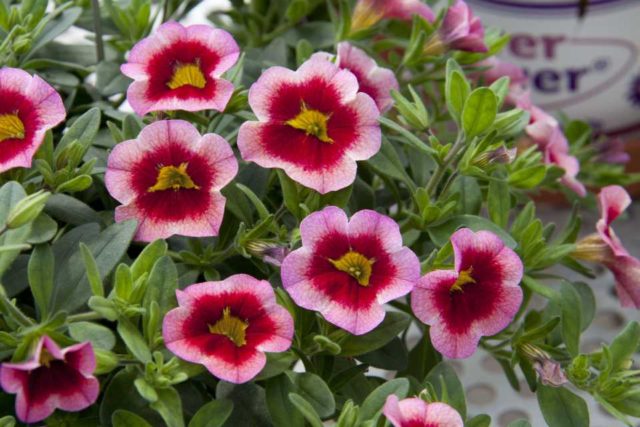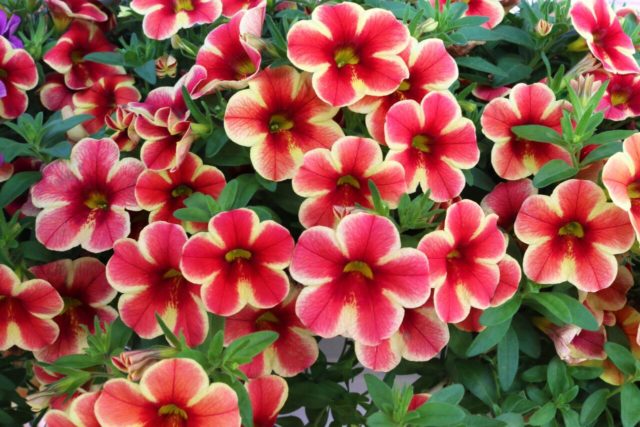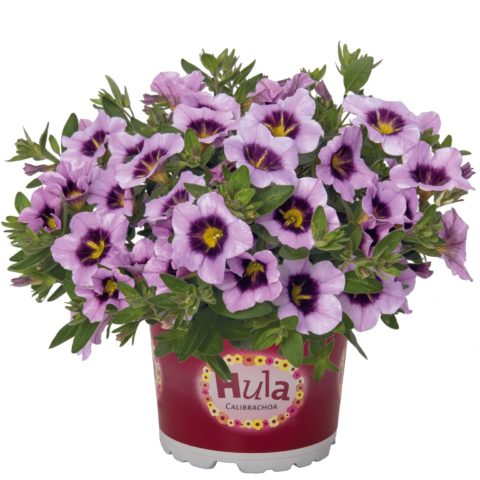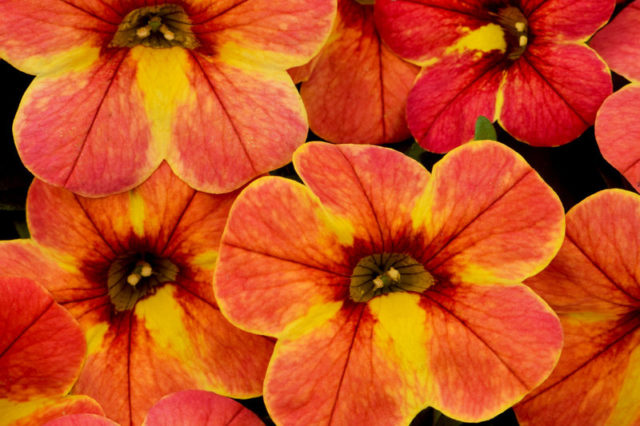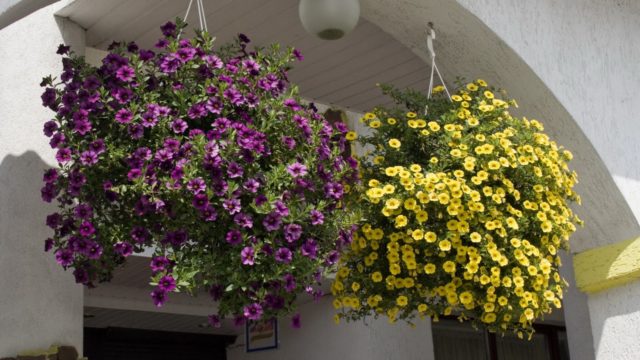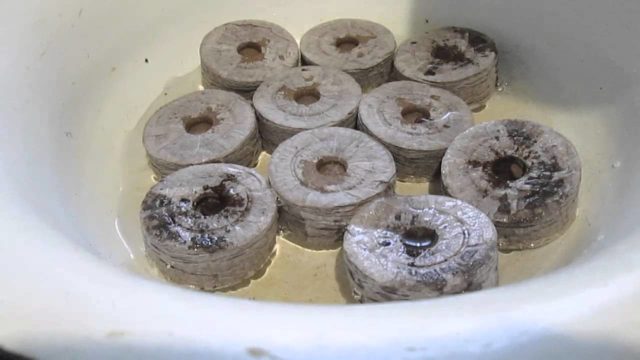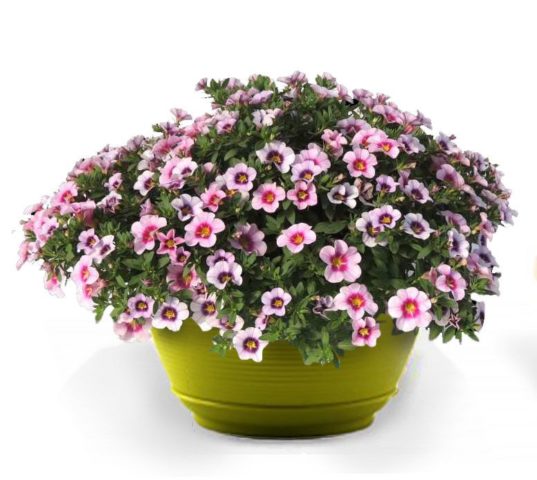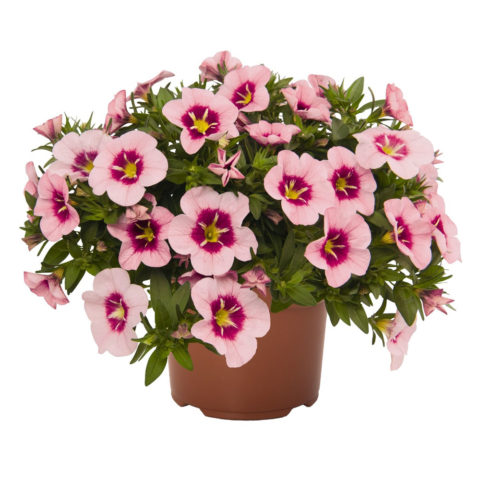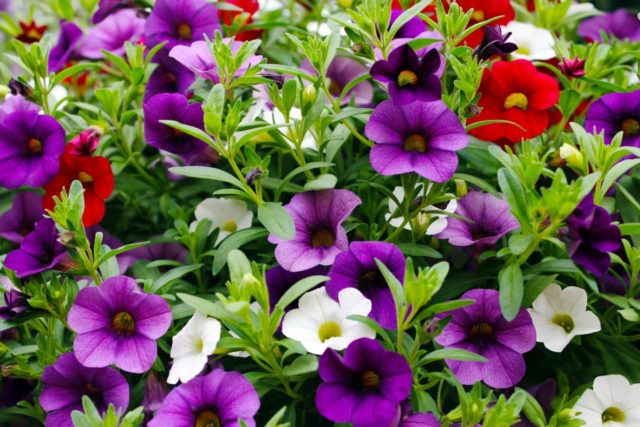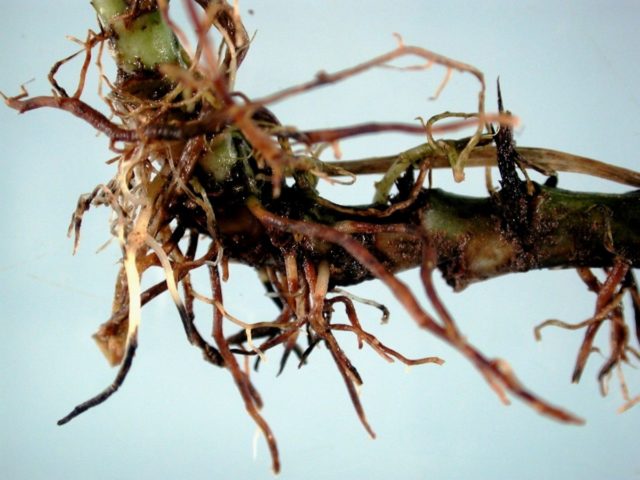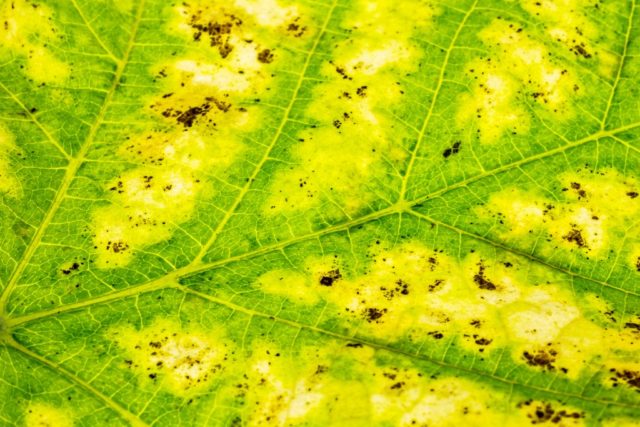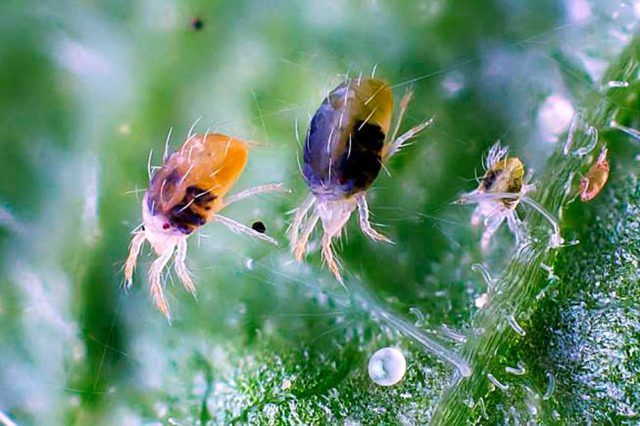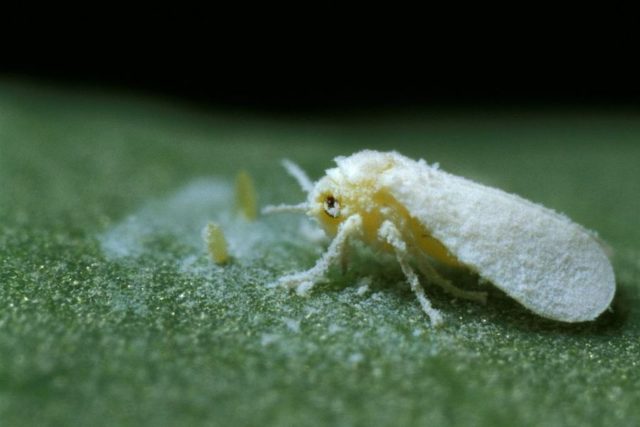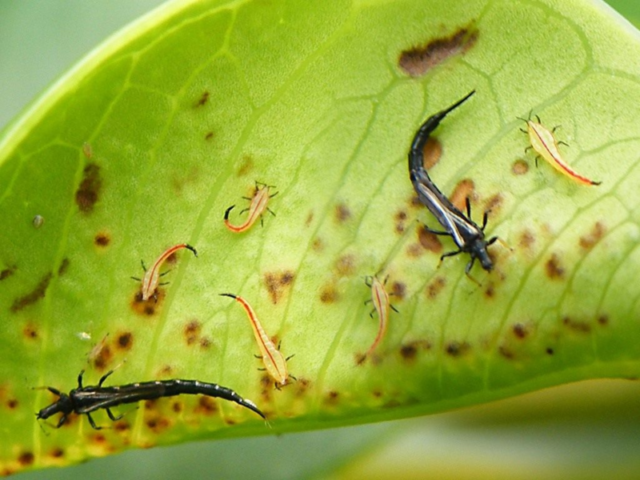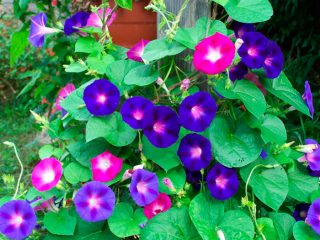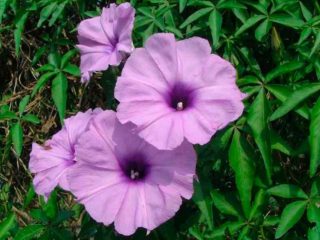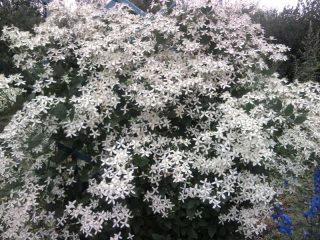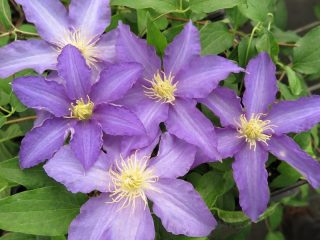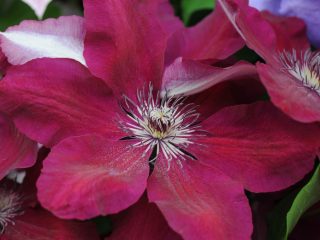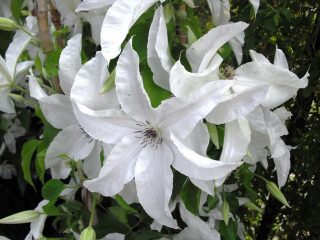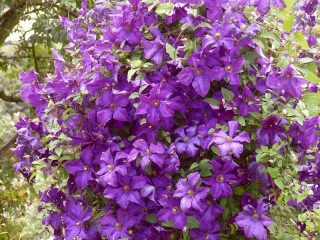Content
- 1 What does Calibrachoa look like?
- 2 Description of Calibrachoa
- 3 Calibrachoa varieties with photos and names
- 4 Calibrachoa in landscape design
- 5 Calibrachoa growing conditions
- 6 Growing calibrachoa seedlings from seeds
- 7 How to plant calibrachoa
- 8 How to care for Calibrachoa
- 9 How to propagate Calibrachoa
- 10 Diseases and pests
- 11 What colors does calibrachoa go with?
- 12 Conclusion
- 13 Reviews on growing and caring for calibrachoa
Calibrachoa, a flower that adorns many balconies and terraces, amazes with its lush cascading beauty. More recently, this plant, completely strewn with small bright bells, was considered by many gardeners to be petunia. Under this name one could also find Calibrachoa in books on floriculture, in which until 1990 it was classified in the genus Petunia. Later, breeding scientists identified chromosomal differences between these crops regarding DNA structure. Based on these studies, it was proven that Petunia Calibrachoa is related to plants, but at the same time completely different.It will be useful for novice gardeners to learn about their external differences, as well as how to properly care for and grow calibrachoa.
What does Calibrachoa look like?
Externally, the flower is very similar to petunia, in particular the shape of the flowers resembles gramophones. Their size is small, no more than 2.5-3 cm in diameter, but this is fully compensated by their large number. A million bells – this is exactly what the name of one of the species sounds like in translation (Million Bells). This name fully characterizes the appearance of the flower, which, when grown in hanging pots and flowerpots, forms bushes with long, drooping stems (about 0.5-1 m), decorated with a chic scattering of bells.
Initially, Calibrachoa could please gardeners only with its purple color, which is native to it. Over time, the plant attracted the attention of breeders, and they developed many hybrids of a wide range of colors. Now you can find calibrachoa with corollas of white and yellow, red and pink, crimson and brown, blue and light blue. As well as various shades of these colors. There are also double varieties, but in terms of the splendor of their flowering they are very inferior to simple calibrachoa species.
Description of Calibrachoa
Calibrahoa is a perennial crop from the Solanaceae genus. In the wild, Calibrachoa bushes are found in Brazil, Argentina, and Uruguay. Hybrids of natural species that are annual are grown as garden plants. The branches of the plant are long and drooping, so they consider it ampelous.
Calibrachoa is quite easy to confuse with petunia, especially for gardeners starting to grow this variety of flowers for the first time. Distinctive features of the species are:
- small flowers;
- the pharynx at the base of the bell, the so-called throat, differs sharply in its color, most often it is bright yellow or brown;
- the veins located in the center of the flower are more saturated in color (compared to the main color);
- the leaves of the plant are small (length - 30-40 mm, width - up to 10 mm), oblong, their surface is covered with sparse, short, hard hair, which is also found on the vines;
- stems are dense, branched, prone to lignification, about 0.5-2 m long;
- The trunk of the plant has an external resemblance to a bush.
Calibrachoa varieties with photos and names
Thanks to the active work of breeders, a huge number of varieties and species of Calibrachoa were bred - both simple, hybrid, and double. Many of them have similar characteristics, characteristics and colors, so sometimes even an experienced gardener finds it difficult to understand the variety of varieties, not to mention amateur gardeners.
Variety Crave Strawberry old
New for 2017 among hanging plants. A distinctive feature is the white and pink bell flowers. The yellow center of the corollas is separated from the petals by a strip of bright pink color.
Variety Bloomtastic Rose Quartz
The Bloomtastic Rose Quartz variety appeared in 2018.Breeders compare it with rose quartz, thanks to the soft pink color of the petals, which are separated from the center of the flower by a wide purple belt. The core of the flower is characteristic yellow.
Variety Volcano sunset
The Volcano sunset variety is distinguished by an unusual color palette of corollas - yellow, pink, scarlet and orange. The neck is traditionally yellow. The bush is spreading, about 50 cm in diameter. The variety is unpretentious in care.
Variety Tropical sunrise
A new variety, striking with its bright striped colors. The petals are decorated with yellow, scarlet and pink lines that merge towards the center. The neck of the flowers is yellow.
Variety Hula Lavender
Strongly branching bushes, unpretentious in care. The length of the lashes is 0.5-0.6 m. The flowers are small, lavender at the edges, purple towards the center. The pharynx (neck) is yellow.
Variety Chameleon Indian summer
Chameleon series, translated as Indian summer. The peduncles of the variety have a bright color, changing depending on the agrotechnical conditions of cultivation and care (watering, lighting, fertilizing). The neck of the flower is yellow.
Calibrachoa in landscape design
Calibrachoa is valued not only for its beautiful and rich appearance, but also for its versatility. Ball-shaped bushes can be used for landscaping balconies and verandas, terraces and ridges. Calibrachoa becomes a real decoration of a garden, alley or the facade of a building when planted in flowerpots, grown in hanging baskets and flowerpots. A falling cascade of small bright flowers fascinates with its delicate beauty. Original compositions can be created by planting together several varieties of different colors.
If Calibrachoa branches are not cared for and periodically pruned, they can grow quite long. Landscape designers often use this feature of the variety to create cascading compositions and beautiful living arches, which have become increasingly popular lately.
Calibrachoa growing conditions
Favorable growth and comfortable development can be ensured by Calibrachoa, subject to certain important conditions relating in particular to cultivation and care:
- The area intended for planting flower bushes should be sunny, protected from drafts and strong winds. Growing indoors involves placing flowerpots and flower pots on the south or southeast side.
- Daytime temperature should not be lower than 22 °C. The threat of late spring frosts must pass.
- During aggressive daytime sunshine, Calibrachoa bushes should be shaded, since not only the leaves, but also the flowers, can simply burn.
- The planting container must be equipped with drainage, at least 5 cm high.
- Refusal to add hydrogel to the soil during planting, since the plant does not need excess moisture during the rooting period.
Growing calibrachoa seedlings from seeds
The best results are obtained by growing Calibrachoa seedlings by planting seeds in peat tablets. They should be soaked first. Experienced gardeners recommend soaking the seeds for about a day in a stimulating solution (Zircon or Epin).
Peat tablets should also be soaked. To do this, they are placed in boiling water, kept in it until it cools completely. Then one seed is buried in each such tablet and the crops are placed in a film cover.
Crops need to be provided with high-quality care and long daylight hours of at least 16 hours. To do this, crops should be illuminated. It is important to maintain a sufficient level of humidity when growing seedlings. After a few days, the film or glass should be removed. Caring for, and in particular feeding, seedlings should begin after the first pair of true leaves appear. Complex fertilizers can be used to feed young plants.
You can also sow Calibrachoa seeds in soil mixtures, using special boxes or containers for growing. The seeds are placed on the surface of the soil. Sowing is done quite densely, at the rate of 50-70 seeds per 1 m2 sown area.
How to plant calibrachoa
Calibrachoa can be grown in open ground - in flower beds and flower beds, as well as indoors, using containers, pots, flowerpots, baskets and cache-pots. Flowering bushes look most impressive in hanging structures. Caring for such plantings is quite simple.
When to Plant Calibrachoa
Calibrachoa loves warmth very much, so it is recommended to plant bushes in open ground in the spring, in mid-to-late May, when the threat of return frosts has passed. The air outside should warm up well, to at least 23 °C. It is recommended to sow seeds in winter, in January, to obtain seedlings.
How much should I plant calibrachoa?
One Calibrachoa bush that has reached a large size needs free space. The volume of container required for planting is calculated based on the number of planted specimens. One seedling requires from 1 to 2 liters of fertile soil. Adult bushes need at least 3 liters of soil.
Preparing the soil for planting
Calibrachoa soil needs to be nutritious, so when planting bushes it is necessary to add humus or compost to it. Also, the soil should be as light as possible, preferably with a lot of loosening agents. The optimal solution is a mixture of leaf and turf soil, sand, peat and humus.
Step-by-step process of preparing soil for planting:
- Sift the soil through a sieve, thereby giving it a loose structure.
- Add sand - 25-30% of the total mass of soil.
- Add a baking powder (for example, Agroperlite) - 30% of the total mass of the substrate.
- Water generously.
- Transfer the prepared soil to the planting container, pressing lightly to prevent possible sagging of the roots.
How many pieces of calibrachoa to plant in a flowerpot?
Only one calibrachoa bush should be planted in each flowerpot or flowerpot. If you plan to get a chic spherical Calibrachoa, then 7 plants can be planted in a flowerpot with a diameter of about 35 cm.
How to care for Calibrachoa
When growing Calibrachoa, it is important to provide the flowers with complete and proper care. Their comfortable development and lush flowering directly depends on the timely implementation of the following agrotechnical measures:
- watering;
- pruning;
- feeding
Watering and fertilizing
Calibrachoa responds well to such care measures as spraying. Therefore, it is recommended to carry out water procedures when growing a flower every day. Watering is also necessary regularly, but at the same time it should be moderate. Apply it at the root of the plant, 1-2 times a week. In summer, when it is very hot, plants should be watered somewhat more often, but the portions of water should be small. The soil should be kept moist, but not too damp, as this can cause rotting of the root system.
It is difficult to imagine complete care without feeding. It is recommended to carry them out with mineral and organic fertilizers, alternating them every 7 days. It is not recommended to feed Calibrachoa with manure, as it provokes the occurrence of fungal diseases that affect the root system. You can fertilize along the leaves and at the roots.If growth is stunted, you can feed the plants with stimulating solutions. Nitrogen fertilizers will promote stem growth, phosphorus and potassium fertilizers will promote bud formation.
How to form calibrachoa correctly
Calibrachoa bushes need to be pruned and pinched regularly. It is also important to carry out care by promptly removing faded buds. Thus, you can not only improve the appearance of the flower, but also significantly extend the flowering period.
The first pinching is performed when growing seedlings, in order to stimulate the growth of side shoots. Pruning begins as soon as Calibrachoa's first flowering period ends. After wilting, all flower stalks are cut off. Such care provides the plant with additional strength for the formation of young shoots, as well as new buds.
Growing and caring for Calibrachoa (photo) involves carrying out a procedure such as bush rejuvenation. For this purpose, in mid-summer it is recommended to cut off all its stems by half. Thanks to this, the Calibrachoa bush will become much more luxuriant. The number of flower stalks will also increase significantly.
Calibrachoa transplant
Rooted Calibrachoa cuttings should be replanted after 14 days. The tops of young bushes must be pinched. Rooting of Calibrachoa bushes in a permanent place is carried out after 1.5 months. High-quality care for transplanted seedlings is as important as for adult plants. Seedlings are moved into open ground at the end of spring.
Wintering
Calibrachoa can be stored during the winter.During the cold period, the faded plant needs rest. Therefore, in the fall, flowerpots with flowers should be brought into a cool room, where they should be stored until spring. The optimal air temperature for wintering bushes is 5-10 °C. At the same time, it is important to minimize such care activities as watering and fertilizing.
With the onset of spring, it will be possible to cut off the tops of the grown bushes and root them again. This way, you can preserve your favorite Calibrachoa varieties from year to year.
How to propagate Calibrachoa
Calibrachoa can be propagated in two ways:
- Vegetative (cuttings).
- Seeds.
Cuttings are considered the simplest and most effective propagation method, which allows you to obtain young bushes with characteristics completely corresponding to the mother plant. Cuttings are prepared in late summer or early autumn. To do this, the apical branches, 4-5 cm long, are cut from the mother bush. A prerequisite is the presence of 5-6 leaves on the cuttings, but only the top two leaves should be left. The prepared branches are immediately planted in the ground. The distance between the cuttings should be at least 2 cm. The containers are placed in a warm and sunny place, equipped with a mini-greenhouse. The cuttings should be periodically ventilated and watered, avoiding waterlogging.
Flower growers do not practice growing calibrachoa from seeds very often. Due to the fact that this procedure is quite labor-intensive.And it’s not always possible to get high-quality planting material
Diseases and pests
Calibrachoa is quite resistant to diseases and pests when grown both indoors and outdoors. But violation of the rules of care can lead to the following diseases:
- blackleg;
- powdery mildew;
- root rot;
- chlorosis.
When the first signs of the disease appear, Calibrachoa bushes should be treated with fungicides. These drugs can also be used to prevent the development of diseases.
The following pests can pose a threat to weakened Calibrachoa bushes:
- aphid;
- spider mite;
- whitefly;
- thrips.
To combat harmful insects, you can use insecticides such as Fitoverm and Actellik.
What colors does calibrachoa go with?
With proper care, the Calibrachoa flower feels comfortable and looks great both in single and group plantings. It can perfectly coexist in hanging containers with other plants of contrasting shades. The variety combines harmoniously when grown together with such garden crops as verbena, ivy, lobelia, and pelargonium.
When growing Calibrachoa in open ground, you can create a chic flower garden by choosing the following garden plants as companions:
- perennial geranium;
- Potentilla;
- evergreen angelonia;
- marigold;
- decorative nettle;
- zinnia;
- decorative sedge;
- sage;
- thyme.
Conclusion
Caring for and growing calibrachoa is not at all difficult.This is evidenced by numerous reviews from gardeners who love these hanging plants for their incredible beauty and ease of care. Growing this flower helps to maximize your imagination and creativity, turning any corner of your garden plot, terrace or city balcony into a wonderful floral oasis.
